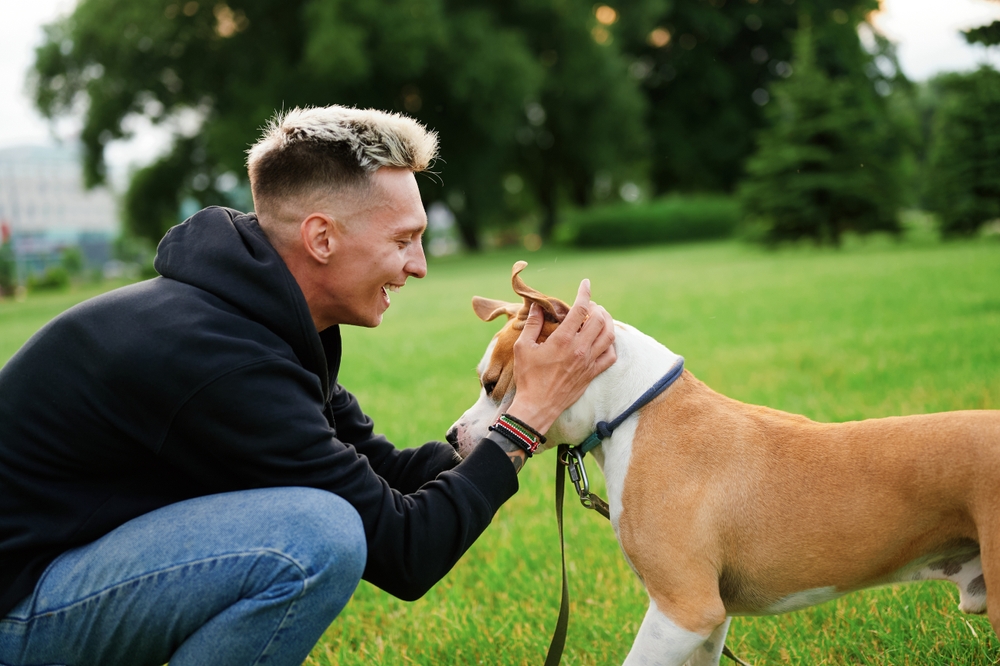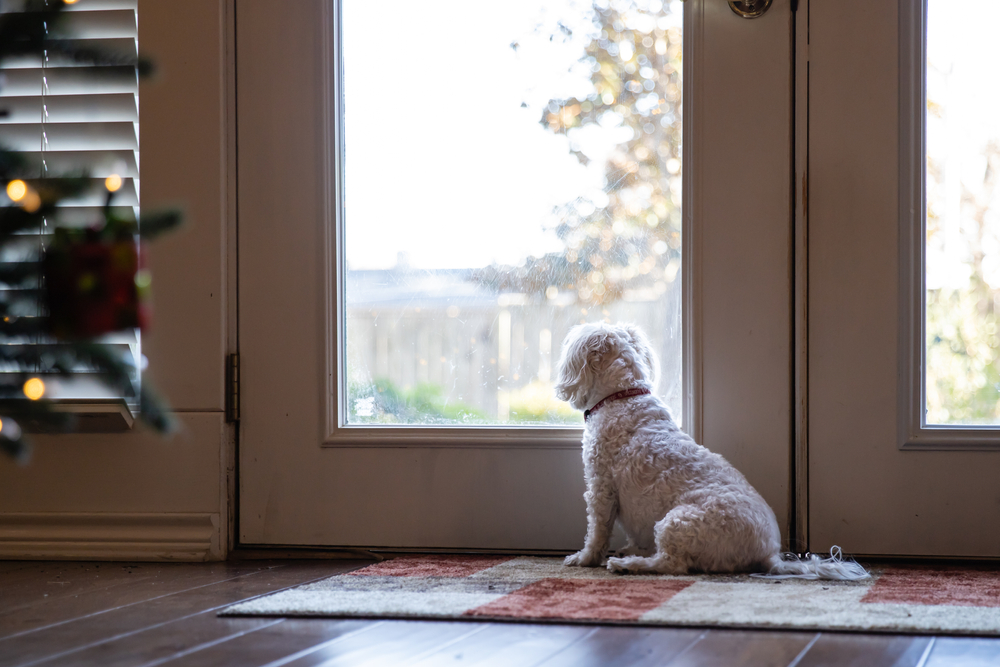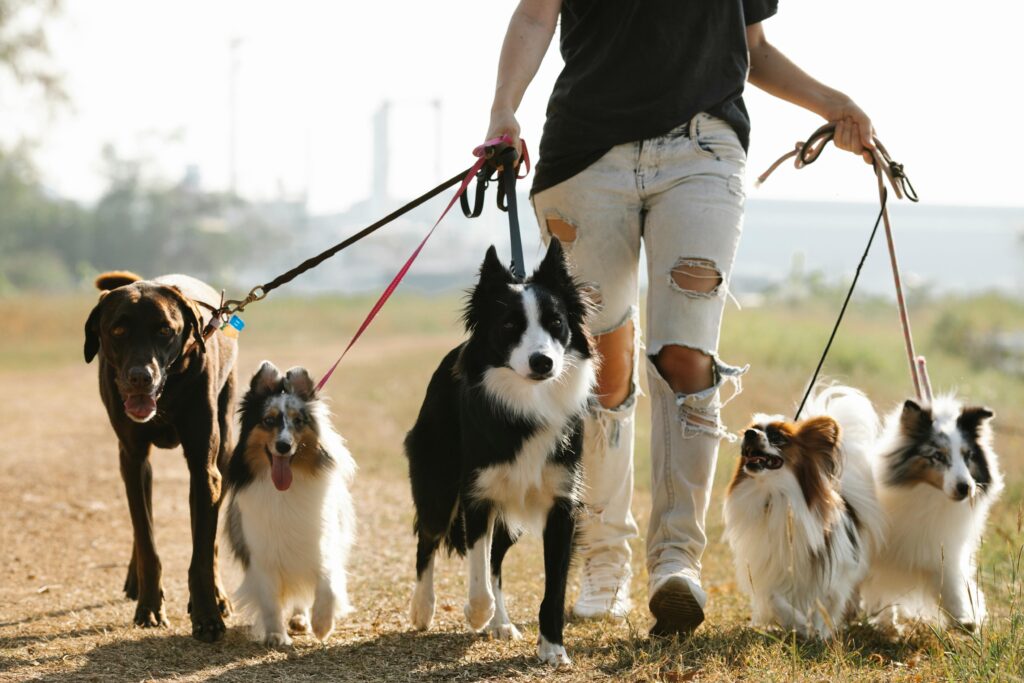In Sweden, You’re Not Allowed to Leave Your Dog Without a Walk for More Than Six Hours Here’s the Reason

If you left your child home alone for ten hours with no company, no conversation, and no chance to go outside, you’d likely feel a pang of guilt. Now imagine doing that every weekday not to a child, but to a creature just as emotionally wired for companionship: your dog.
In Sweden, that scenario isn’t just frowned upon it’s illegal.
The law is simple but powerful: dogs cannot be left without a walk or meaningful engagement for more than six hours. It’s not based on sentimentality, but science. Dogs experience time. They feel isolation. And they suffer in silence when we pretend they don’t.
While some countries treat animal welfare as an afterthought, Sweden treats it as a matter of justice not just for wild species or livestock, but for the dog curled up in your living room, waiting for the sound of your key in the lock.
What can we learn from a country that protects its dogs better than most protect their workers? More than you might think.
Why Six Hours Feels Like a Lifetime
Six hours. That’s the length of a transatlantic flight. Or a double shift in a hospital. To a dog, it can feel like an eternity of silence, stillness, and confusion.
Contrary to the popular belief that dogs just sleep the day away, science tells us they’re keenly aware of time. Their internal rhythms their circadian clocks aren’t just primitive instincts. Studies have shown that dogs respond differently depending on how long you’ve been gone. After two hours, they’re calm. After six, they’re anxious, overexcited, or even distressed. Time isn’t abstract for them. It’s felt deeply, viscerally.
Dogs are pack animals. Evolution didn’t design them for solitude, but for connection. A dog left alone for too long isn’t just bored it’s deprived of a core emotional need. In Sweden, the six-hour rule is not just an arbitrary legal line. It’s based on an understanding of the dog’s psychological makeup an acknowledgment that prolonged isolation isn’t benign, it’s harmful.

Animal behaviorists like Jens Jokumsen of Animal Protection Denmark emphasize this truth: even if a dog can be trained to tolerate being alone, that doesn’t mean it thrives in it. “Being alone is not natural for a dog,” he reminds us. And just because they aren’t howling doesn’t mean they’re okay. Some dogs express their loneliness with destruction or noise. Others simply shut down lying still, staring at the door you left through, hour after hour.
The reality is, time stretches differently for a creature that doesn’t understand meetings, traffic, or schedules. All they know is that their pack their person is gone. And they have no idea when you’re coming back.
The Emotional Impact of Isolation on Dogs

We often say that dogs are part of the family but would we ever leave a family member to silently suffer for hours on end, every single day?
For dogs, isolation isn’t just boring. It’s stressful. It’s confusing. And in some cases, it’s traumatizing.
Some dogs express this distress loudly through howling, barking, or chewing up the furniture. Others suffer quietly. They sit trembling by the door, or stare listlessly at the window, waiting for a shadow of your return. You might not notice anything when you walk back in, but a camera left running during the day often reveals the truth: stillness, anxiety, or outright panic.
That’s because dogs, at their core, are not meant to be alone. Their very DNA is shaped by millennia of companionship first with each other, then with us. A dog without its pack is a dog without its safety net. Alone, it feels exposed, anxious, and confused. It’s not an act of disobedience when they cry or act out it’s a cry for connection.
The pandemic offered a harsh mirror to this truth. During lockdown, millions of people adopted puppies, basking in the joy of constant companionship. But when life returned to “normal,” many of those same dogs untrained for solitude were suddenly left alone for hours. The result? A spike in behavioral problems. A heartbreaking surge in abandonment. Shelters received call after call from owners overwhelmed by the emotional needs of a dog now suffering from separation anxiety.
This isn’t just a matter of inconvenience it’s a matter of mental health. Dogs can experience depression. They can lose interest in food, in play, in life itself when isolation becomes chronic.
Jens Jokumsen put it plainly: “If you don’t have time for the dog, don’t get one.” Because with every long, silent hour of absence, you’re not just teaching your dog to wait you’re teaching it to endure loneliness it never asked for.
How a Country Redefined Pet Welfare

In Sweden, dogs aren’t just “pets.” They’re sentient beings with legal protections that, in some cases, surpass those afforded to people in the workplace.
The country’s animal welfare laws are among the most progressive in the world and not just in theory. They are enforced. You cannot leave your dog alone for more than six hours. You cannot tether it outside for more than one hour. You cannot crate it for extended periods. Dogs must have access to a sunny window, daily stimulation, and physical movement. These aren’t suggestions. They’re statutes.
It may sound extreme to some until you realize what these rules are really about: dignity. Not just the absence of suffering, but the presence of well-being. Sweden doesn’t view dogs as accessories or entertainment. It recognizes them as emotional creatures with needs, routines, and rights.
Break these laws, and the consequences are serious: fines, bans from pet ownership, even jail time. Imagine telling a judge that you were sentenced not for theft or assault but for tethering your dog too long outside a café. In Sweden, that’s not ridiculous. It’s justice.
This legal compassion extends beyond dogs. Cows must graze freely for a minimum number of summer days. Guinea pigs must be kept in pairs because loneliness is recognized even in the smallest animals. It’s a system designed not just around control, but care.
Compare that to countries where dogs can spend entire days in crates, or be left alone from dawn until dusk with no legal consequence. Where animal welfare laws exist mostly on paper. Where loneliness, boredom, and emotional distress are shrugged off as “just part of being a dog.”
What Responsible Ownership Looks Like

Loving a dog isn’t just about cuddles, cute photos, or buying the right kibble. It’s about showing up every day, in small, consistent, and often inconvenient ways. Because owning a dog isn’t a hobby. It’s a commitment to another being’s quality of life.
Responsible ownership starts with time real time. Not just in the evenings or on weekends, but in the daily rhythm of walks, companionship, and stimulation. In Sweden, dogs are legally entitled to at least three walks a day. Think about that. While many of us try to fit our pets into the margins of our day, Sweden builds the day around them.
That means more than a quick trip around the block. Dogs need to sniff, explore, move, and engage their senses. Mental fatigue the kind that comes from stimulation and discovery is just as important as physical exhaustion. A tired dog isn’t just a quiet dog. It’s a balanced one.

If your schedule doesn’t allow for those needs, you don’t have to give up. You just have to adjust. That could mean planning hybrid workdays so you’re home more often. Tag-teaming with your partner or roommates to stagger time away. Hiring a trusted dog walker. Enrolling your dog in daycare. Or asking yourself, humbly: Can I truly meet the emotional and physical needs of this animal right now?
That question is essential. Because as Jens Jokumsen reminds us, “It’s not a human right to have a dog.” It’s a choice one that must come with humility and preparation.
Responsible ownership also means resisting the quick fix. Crating a dog all day isn’t a solution. It’s confinement. A silent apartment with no stimulation isn’t peace. It’s deprivation. Training your dog to be alone is helpful but it must be gradual, supported, and built with patience.
And perhaps most importantly, responsible ownership means presence. Not just being around, but being attuned. It’s noticing when your dog is restless. It’s recognizing the early signs of stress. It’s choosing to engage, even when you’re tired, because their entire world revolves around the time they get to spend with you.
A Mirror, Not Just a Rule
The six-hour law in Sweden isn’t just about dogs. It’s about us.
It asks a bigger question: How do we treat those who depend on us especially when they can’t speak up? Do we make space for their needs in our fast-moving lives, or do we expect them to adapt silently to our absence?
A dog’s loyalty is unconditional. But our responsibility shouldn’t be. It should be deliberate, thoughtful, and worthy of the trust we’re given. Because having a dog isn’t about ownership it’s about stewardship.
The way Sweden protects its dogs reminds us that empathy can be written into law, compassion can shape culture, and silence even the kind that waits patiently by the door deserves to be heard.
So next time you reach for the leash, pause. You’re not just walking a dog. You’re honoring a bond one that asks not just for love, but for presence.
And maybe, just maybe, in showing up better for them, we learn to show up better for each other.
Loading...

